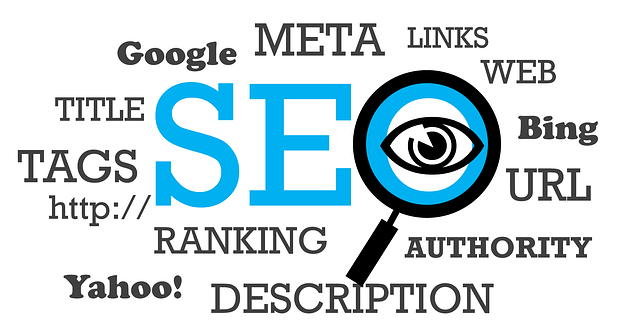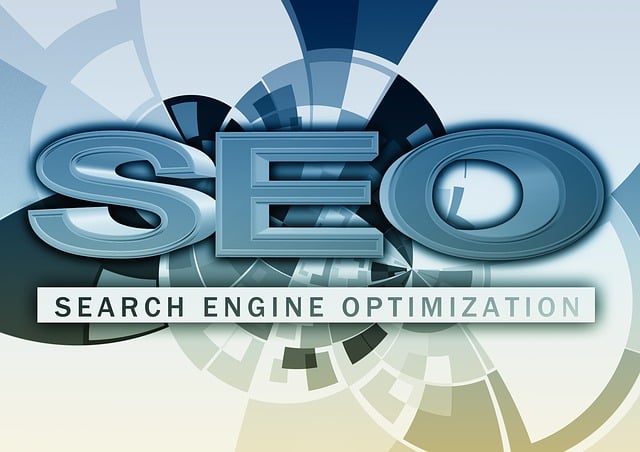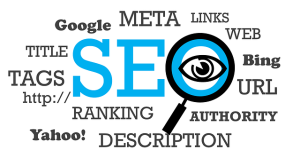Search Engine Optimization (SEO) significantly boosts a website's online visibility and performance by aligning with user search intent and search engine algorithms. Through on-page optimization, like keyword research and high-quality content creation, and off-page optimization, including reputable backlinks, businesses can achieve increased organic traffic, improved user experience, better conversion rates, and enhanced credibility. Key SEO components include keyword research for relevant content, on-page optimizations for higher rankings, and off-page strategies for building authority through quality backlinks. Measuring performance using analytics tools is crucial for informed decision-making. Staying current with algorithm updates and understanding changing user behavior is essential to capitalize on the benefits of Search Engine Optimization (SEO) and maintain effective search engine performance.
Discover the power of Search Engine Optimization (SEO) and how it can transform your online presence. This article delves into the strategies that enhance search engine rankings, boosting website visibility and driving traffic. From grasping the fundamentals of SEO to implementing on-page optimizations and building authority through backlinks, each section reveals valuable insights. Uncover the metrics and tools for tracking progress while staying ahead of evolving SEO trends. Unlock the benefits of SEO for unparalleled online success.
Understanding Search Engine Optimization (SEO): The Basics

Search Engine Optimization, or SEO, is a strategy that enhances a website’s visibility and ranking in search engine results pages (SERPs). It’s about understanding how search engines work and what users are searching for, then optimizing your site to match these criteria. By implementing effective SEO practices, businesses can reap numerous benefits, including increased organic traffic, improved user experience, and better conversion rates.
At its core, SEO involves two main components: on-page optimization and off-page optimization. On-page optimization focuses on refining elements within a website, such as keyword research, high-quality content creation, and optimizing meta tags. Off-page optimization, on the other hand, involves building reputable backlinks from authoritative sites to boost your site’s authority and trustworthiness in the eyes of search engines. Together, these strategies help search engines understand and rank your site higher for relevant queries, ultimately driving more qualified visitors to your digital doorstep.
How SEO Improves Online Visibility and Website Traffic

Search Engine Optimization (SEO) is a powerful tool that significantly enhances online visibility and drives website traffic. By understanding and implementing SEO best practices, businesses can ensure their websites appear higher in search engine results pages (SERPs). This increased ranking has several benefits. First, it attracts more organic traffic as users are more likely to click on the top results, often considering them the most relevant. Higher rankings also build credibility; users trust top-listed sites more, assuming they offer quality content and services.
Moreover, SEO improves a website’s overall performance by encouraging search engines to index pages faster and making content more accessible. Well-optimized websites are better equipped to engage visitors, leading to longer session durations and reduced bounce rates. This data signals to search engines that the site provides valuable information, resulting in improved rankings over time. Ultimately, effective SEO strategies translate into better online visibility, increased website traffic, and enhanced user experiences.
Key Components of Effective SEO Strategies

Effective SEO strategies are built on a foundation of key components that work in harmony to enhance search engine performance and drive organic traffic. One of the cornerstones is keyword research, which involves identifying relevant terms and phrases that potential customers use when searching for products or services similar to yours. Incorporating these keywords naturally into your website content, including titles, headings, meta descriptions, and body text, signals to search engines what your page is about, thereby improving its relevance and ranking.
Another critical component is high-quality content creation. Content serves as the lifeblood of any website, providing value to visitors while also resonating with search engine algorithms. Regularly updating your site with fresh, informative, and engaging content not only keeps users engaged but also signals to search engines that your site is active and authoritative in its niche. This, in turn, can lead to improved rankings, increased visibility, and ultimately, the benefits of enhanced online accessibility and higher website traffic.
On-Page Optimization Techniques for Better Rankings

On-Page optimization is a crucial aspect of Search Engine Optimization (SEO) that directly influences your site’s ranking on search engine result pages (SERPs). It involves refining various elements within your web pages to enhance their relevance and quality in the eyes of search engines like Google. One of the key benefits of implementing effective on-page techniques is improved visibility for your content, leading to higher organic traffic and increased brand awareness. This process starts with thorough keyword research, where you identify relevant terms that your target audience uses when searching for products or services similar to yours. Integrating these keywords strategically into titles, headings, meta descriptions, and throughout your content ensures search engines understand the topic and context of your pages accurately.
Additionally, on-page optimization includes optimizing images with alt tags, ensuring a user-friendly website structure, improving loading speed, and creating compelling, unique title tags and meta descriptions. These techniques not only benefit SEO but also enhance the overall user experience, encouraging visitors to engage more with your content and reducing bounce rates. By combining these tactics, businesses can see significant improvements in their search engine rankings, thereby reaping the benefits of enhanced online visibility and a wider reach for their target audience.
Off-Page SEO: Building Quality Backlinks and Authority

Off-Page SEO is a crucial component in the quest for better search engine performance, focusing on strategies beyond your website’s content and structure. One of its key aspects is building quality backlinks, which act as votes of confidence from other websites. When reputable sources link to yours, it signals to search engines that your site offers valuable information, boosting its authority and credibility. This process enhances your site’s visibility and can significantly improve your rankings in search results.
The benefits of this approach extend beyond immediate traffic increases. High-quality backlinks contribute to a stronger online presence by establishing your brand as an authority in your industry. Search engines like Google use these links to understand the relevance and value of your content, which can lead to better placement in organic searches. By consistently earning backlinks from trusted sources, you can enhance your site’s long-term SEO performance and attract more qualified visitors.
Measuring and Analyzing SEO Performance: Tools and Metrics

Measuring and analyzing SEO performance is a crucial step in understanding the benefits of search engine optimization. Various tools and metrics are available to help assess how effectively your website ranks on search engines. Keyword rankings, organic traffic, click-through rates (CTRs), and bounce rates are among the key metrics to track. These provide insights into the visibility and effectiveness of your online content.
Advanced analytics tools like Google Analytics offer comprehensive data on user behavior, allowing you to see which pages perform well, where visitors come from, and how they interact with your site. This information is vital for making informed decisions about future SEO strategies. By continuously monitoring these metrics, you can adjust your approach to maximize the benefits of search engine optimization and improve your website’s overall performance.
Staying Updated with SEO Trends: A Continuous Process

The benefits of Search Engine Optimization (SEO) are well-documented, from increased website visibility to higher organic search rankings. However, staying ahead in SEO is a continuous process due to the dynamic nature of search engine algorithms and market trends. What works today might not guarantee success tomorrow, making it crucial for businesses to stay updated with the latest SEO trends. This involves keeping an eye on algorithm updates from major search engines like Google, understanding changes in user search behavior, and adapting strategies accordingly.
By staying current, businesses can leverage emerging SEO techniques that enhance their online presence. They can optimize content for voice search, implement structured data markup, and focus on mobile-friendliness to meet evolving user expectations. Continuous learning and adaptation ensure that SEO efforts remain effective, driving better search engine performance and maximizing the benefits of optimization over time.
